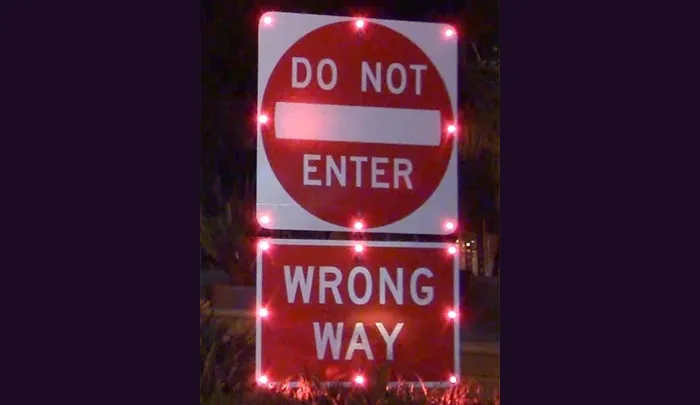Clearview Intelligence reports that its lighted road stud system for the A720 Sheriffhall Roundabout in Edinburgh, Scotland has picked up another award. Clearview picked up the Most Innovative Transport Project award at the UK’s recent National Transport Awards held in London. Clearview Intelligence set up its lighted road stud project in conjunction with Scottish government agency Transport Scotland, road operator BEAR (Scotland), the Transport Research Institute at Edinburgh Napier University and con
January 31, 2017
Read time: 3 mins
Clearview Intelligence reports that its lighted road stud system for the A720 Sheriffhall Roundabout in Edinburgh, Scotland has picked up another award
Clearview picked up the Most Innovative Transport Project award at the UK’s recent National Transport Awards held in London.
Clearview Intelligence set up its lighted road stud project in conjunction with Scottish government agency4068 Transport Scotland, road operator BEAR (Scotland), the Transport Research Institute at 5954 Edinburgh Napier University and contractor 2958 Amey.
The goal of the project – the first in the UK - has been to reduce lane transgression on the multi-lane roundabout that connects six key roads around Edinburgh and handles upwards of 42,000 vehicles a day.
The A720 Sheriffhall is traffic signal controlled and features spiral markings to guide drivers through the junction to their destination arm. Despite these measures, casualty statistics indicated that Sheriffhall had a high frequency of accidents with some 65 injuries recorded in the 10 years to 2013. Additionally, even minor collisions at this junction have the knock-on effect of causing significant disruption across the network.
Clearview Intelligence’s active road studs are triggered by green phases of traffic signals on the roundabout. As soon as the traffic signal on the entrance to the roundabout turns green, studs embedded in the road surface immediately illuminate and guide drivers onto the appropriate lanes of the roundabout.
When the traffic signal turns red, all studs on that section switch off and studs at the next section illuminate as the corresponding traffic signal turns green.
In this way, drivers get an illuminated green phase to guide them all the way around and off the roundabout. They have clear visual definition of the lanes to heighten lane discipline and reduce preventable collisions.
Clearview says that independent evaluation by researchers from the Transport Research Institute at Edinburgh Napier University conducted a full before-and-after study on driver behaviour at the roundabout that analysed over 55,000 vehicle movements.
Research to date has found a reduction in lane transgression activity across nearly all vehicle types and manoeuvres, even during daylight hours, including a significant reduction in transgression rate (>50%) for medium-sized vehicles.
Overall, the study has concluded that the intelligent road stud scheme has significant positive impact on collision risk at the roundabout through reduced lane transgressions, meaning less congestion and fewer accidents.
Clearview picked up the Most Innovative Transport Project award at the UK’s recent National Transport Awards held in London.
Clearview Intelligence set up its lighted road stud project in conjunction with Scottish government agency
The goal of the project – the first in the UK - has been to reduce lane transgression on the multi-lane roundabout that connects six key roads around Edinburgh and handles upwards of 42,000 vehicles a day.
The A720 Sheriffhall is traffic signal controlled and features spiral markings to guide drivers through the junction to their destination arm. Despite these measures, casualty statistics indicated that Sheriffhall had a high frequency of accidents with some 65 injuries recorded in the 10 years to 2013. Additionally, even minor collisions at this junction have the knock-on effect of causing significant disruption across the network.
Clearview Intelligence’s active road studs are triggered by green phases of traffic signals on the roundabout. As soon as the traffic signal on the entrance to the roundabout turns green, studs embedded in the road surface immediately illuminate and guide drivers onto the appropriate lanes of the roundabout.
When the traffic signal turns red, all studs on that section switch off and studs at the next section illuminate as the corresponding traffic signal turns green.
In this way, drivers get an illuminated green phase to guide them all the way around and off the roundabout. They have clear visual definition of the lanes to heighten lane discipline and reduce preventable collisions.
Clearview says that independent evaluation by researchers from the Transport Research Institute at Edinburgh Napier University conducted a full before-and-after study on driver behaviour at the roundabout that analysed over 55,000 vehicle movements.
Research to date has found a reduction in lane transgression activity across nearly all vehicle types and manoeuvres, even during daylight hours, including a significant reduction in transgression rate (>50%) for medium-sized vehicles.
Overall, the study has concluded that the intelligent road stud scheme has significant positive impact on collision risk at the roundabout through reduced lane transgressions, meaning less congestion and fewer accidents.









